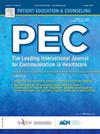Exploring the validity of US Pharmacopeia pictograms among young Spanish citizens who have completed secondary education
IF 3.1
2区 医学
Q2 PUBLIC, ENVIRONMENTAL & OCCUPATIONAL HEALTH
引用次数: 0
Abstract
Objective
This study aimed to explore the validity of US Pharmacopeia pictograms among young Spanish citizens who have completed secondary education.
Methods
A multicenter cross-sectional study was conducted in Melilla, Spain, with young citizens who completed secondary education in 2021–2022, recruited through convenience sampling. A random selection of US Pharmacopeia pictograms was assessed to examine comprehension results and their relationship with relevant sociodemographic variables and Health Literacy measured using the validated questionnaire (HLS-EU-Q16). Only pictograms meeting the ISO comprehensibility threshold of 66.70 % upon initial presentation were considered valid. Simple linear regression analyzed user factors affecting pictogram comprehension, and significant variables (p < 0.05) were included in a multiple regression to evaluate their combined effect.
Results
Of the 20 pictograms evaluated, 12 met the minimum comprehensibility threshold. Some safety-related pictograms showed particularly low results. For instance, the pictogram intended to convey “flammable” had a notably low comprehensibility rate (29.33 %). Health literacy was the strongest predictor of comprehension, with higher scores among individuals with high Health literacy (67.77 %) compared to those with low Health literacy (61.79 %). The multivariate model confirmed that Health literacy (p = 10⁻⁴), male gender (p = 0.029), non-European origin (p = 0.034), and age (p = 0.037) were associated with lower comprehension.
Conclusions
US Pharmacopeia pictograms do not achieve sufficient comprehensibility to ensure the safe and appropriate use of medications in this population. New pictograms will need to be developed or existing ones reconceptualized to ensure valid use within this population.
Practice implications
Enhancing Health Literacy education in schools is crucial for improving the comprehension of pharmaceutical pictograms, ensuring their effective application in health communication strategies.
探索美国药典象形文字在完成中等教育的年轻西班牙公民中的有效性
目的本研究旨在探讨美国药典象形文字在完成中等教育的西班牙青年公民中的有效性。方法采用方便抽样的方法,在西班牙梅利利亚开展多中心横断面研究,招募2021-2022年完成中等教育的青年公民。随机选择美国药典象形图进行评估,以检查理解结果及其与相关社会人口学变量和使用有效问卷(HLS-EU-Q16)测量的健康素养的关系。只有符合ISO可理解性阈值66.70 %的象形文字才被认为是有效的。简单线性回归分析影响象形文字理解的用户因素,并纳入显著变量(p <; 0.05)进行多元回归评价其综合效果。结果在被评估的20个象形文字中,有12个符合最低可理解阈值。一些与安全相关的象形图显示出特别低的结果。例如,表示“易燃”的象形文字的可理解率明显较低(29.33 %)。健康素养是理解的最强预测因子,高健康素养个体的得分(67.77 %)高于低健康素养个体(61.79 %)。多变量模型证实,健康知识(p = 10⁻⁴)、男性(p = 0.029)、非欧洲血统(p = 0.034)和年龄(p = 0.037)与较低的理解能力相关。结论美国药典象形文字的可理解性不足以保证该人群安全、合理用药。需要开发新的象形文字,或对现有的象形文字进行重新构思,以确保在这一群体中有效使用。实践启示加强学校健康素养教育对于提高对药物象形文字的理解,确保其在健康传播策略中的有效应用至关重要。
本文章由计算机程序翻译,如有差异,请以英文原文为准。
求助全文
约1分钟内获得全文
求助全文
来源期刊

Patient Education and Counseling
医学-公共卫生、环境卫生与职业卫生
CiteScore
5.60
自引率
11.40%
发文量
384
审稿时长
46 days
期刊介绍:
Patient Education and Counseling is an interdisciplinary, international journal for patient education and health promotion researchers, managers and clinicians. The journal seeks to explore and elucidate the educational, counseling and communication models in health care. Its aim is to provide a forum for fundamental as well as applied research, and to promote the study of organizational issues involved with the delivery of patient education, counseling, health promotion services and training models in improving communication between providers and patients.
 求助内容:
求助内容: 应助结果提醒方式:
应助结果提醒方式:


